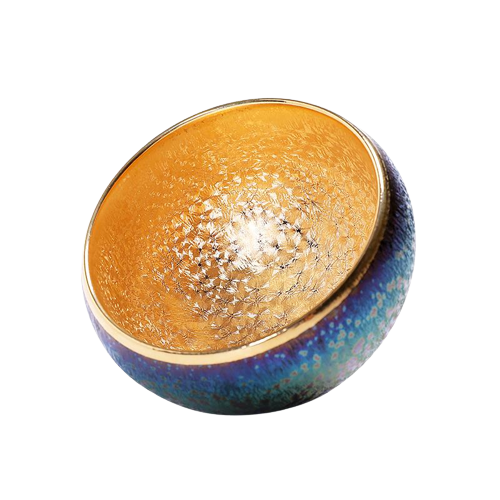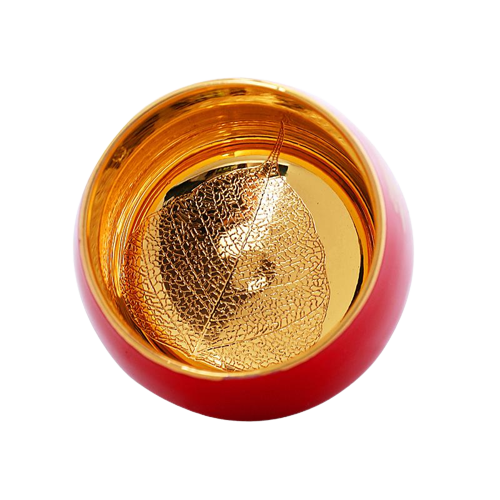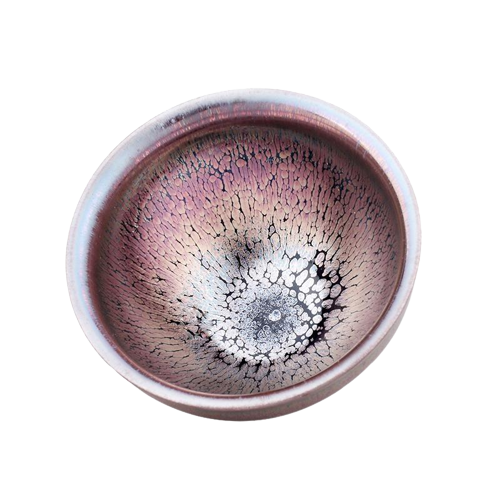Types of tea are numerous and varied. The world of tea offers a rich tapestry of flavors. It also presents a wide array of aromas. Each variety has its own unique character. This is shaped by its origin and processing. From delicate white teas to robust black teas, the options are endless. This text will explore the main categories. It will provide a detailed look at each one. This will help you appreciate the diversity of tea. It will also help you choose your next cup. The journey into the world of tea is fascinating. It is a journey of taste and tradition. Let's begin this exploration together.
Green Tea: A Fresh and Vibrant Choice Among Tea Types
Green tea is one of the most popular types of tea. It is known for its fresh, grassy flavor. It is made from the leaves of the Camellia sinensis plant. The leaves are harvested and quickly heated. This prevents oxidation. This process preserves their green color. It also retains their high concentration of antioxidants. These antioxidants are called catechins. They are believed to have many health benefits. Green tea is grown in many countries. China and Japan are the most famous producers. Each region produces distinct varieties. Chinese green teas are often pan-fired. This gives them a toasty, nutty flavor. Japanese green teas are typically steamed. This results in a more vegetal, savory taste. There are many famous green teas. Dragon Well from China is one. Sencha from Japan is another. Each offers a unique sensory experience. Green tea is a versatile beverage. It can be enjoyed hot or cold. It is a refreshing and healthy choice.
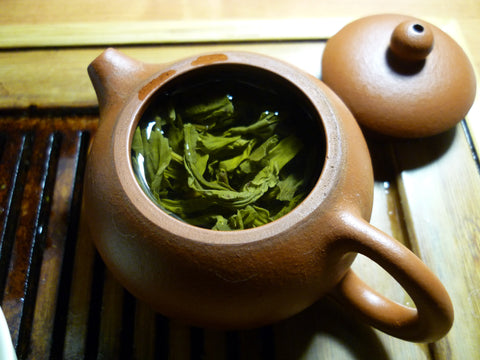
Black Tea: A Bold and Robust Brew of Tea Varieties
Black tea is another major category of types of tea. It is the most consumed tea in the Western world. It is known for its bold, robust flavor. It also has a higher caffeine content than other teas. Black tea is made from the same plant as green tea. However, it undergoes a full oxidation process. This process turns the leaves dark brown. It also develops their complex flavors. These flavors can range from malty to fruity. The production of black tea involves several steps. The leaves are withered, rolled, oxidized, and dried. Each step is carefully controlled. This ensures the desired flavor profile. Many famous black teas exist. Assam and Darjeeling from India are well-known. Keemun from China is also highly prized. Each has its own unique characteristics. Assam is known for its malty flavor. Darjeeling has a more delicate, floral taste. Keemun offers a winey, fruity aroma. Black tea is often enjoyed with milk and sugar. It is also the base for many popular blends. Earl Grey and English Breakfast are two examples. It is a truly classic and beloved beverage.
Oolong Tea: A Complex and Aromatic Infusion of Tea Types
Oolong tea represents a diverse and complex category of types of tea. It is a semi-oxidized tea. This means it falls between green and black tea. The oxidation level can range from 10% to 80%. This wide range results in a vast spectrum of flavors. Some oolongs are light and floral. Others are dark and roasted. The production of oolong tea is an art form. It requires great skill and precision. The leaves are repeatedly rolled and oxidized. This process develops their unique aromas. Taiwan and China are the main producers of oolong tea. Each region has its own famous varieties. Tie Guan Yin from China is a well-known example. It has a floral, orchid-like aroma. Dong Ding from Taiwan is another popular choice. It has a more roasted, nutty flavor. Oolong tea is prized for its complex character. It can be infused multiple times. Each infusion reveals new layers of flavor. This makes it a favorite among tea connoisseurs. It is a truly captivating and rewarding tea to explore.
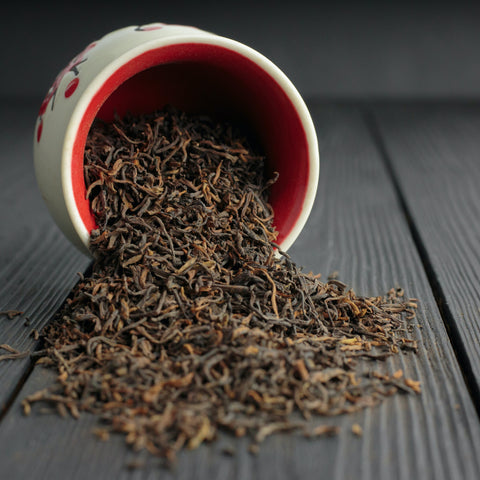
Yellow Tea: A Rare and Delicate Brew
Yellow tea is a rare and unique type of tea. It is similar to green tea in processing. However, it includes an extra step. This step is called 'men huan' or 'sealing yellow'. The tea leaves are gently heated. They are then covered. This allows for a slight oxidation. This process gives the leaves a yellowish hue. It also creates a mellow flavor. Yellow tea has a less grassy taste than green tea. It offers a smoother, sweeter profile. This tea is produced in small quantities. It is often more expensive. Its rarity makes it highly sought after. Yellow tea is primarily from China. Hunan and Anhui provinces are key regions. Famous yellow teas include Junshan Yinzhen. This tea is known for its delicate taste. Another is Mengding Huangya. This tea has a subtle, sweet aroma. Yellow tea is a true connoisseur’s delight. It offers a distinct and refined tea experience. Its unique processing sets it apart. It is a testament to tea-making artistry.
White Tea: The Purest Form of Tea
White tea is considered the least processed of all types of tea. It is made from young tea buds. Sometimes, young leaves are also included. These are carefully picked. They are then withered and dried. This minimal processing preserves their natural qualities. White tea has a delicate, subtle flavor. It often has notes of honey or floral hints. Its color is very light. This reflects its minimal oxidation. White tea is primarily from China. Fujian province is its birthplace. Famous white teas include Silver Needle. This tea consists only of buds. Another is White Peony. This tea includes buds and leaves. White tea is known for its health benefits. It contains high levels of antioxidants. It is a refreshing and gentle beverage. It offers a pure taste of the tea plant. Its simplicity is its strength. It is a truly elegant and natural choice.
Pu-erh Tea: An Aged and Earthy Delight
Pu-erh tea is a unique category among types of tea. It originates from Yunnan province in China. This tea undergoes a fermentation process. This fermentation can be natural or accelerated. Natural fermentation occurs over many years. It happens as the tea ages. Accelerated fermentation uses controlled moisture and heat. This speeds up the aging process. Pu-erh tea is often pressed into cakes. It can also be found as loose leaf. Its flavor profile is distinct. It is earthy, woody, and sometimes sweet. Aged pu-erh develops complex notes. These include camphor or dried fruit. Pu-erh is known for its digestive benefits. It is often consumed after meals. There are two main types: Sheng Pu-erh and Shou Pu-erh. Sheng is raw and ages naturally. Shou is cooked and fermented quickly. Pu-erh tea is a living tea. Its flavor evolves over time. This makes it a fascinating tea. It is highly valued by collectors. It offers a deep and satisfying experience.
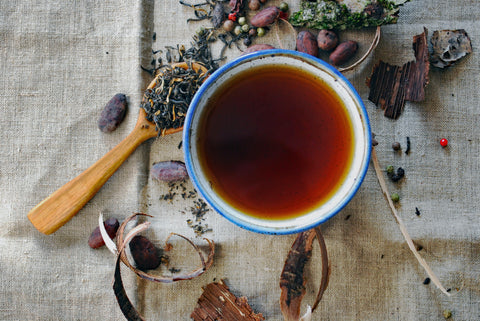
Herbal Tea: A World of Flavors and Wellness
Herbal tea, often called tisanes, are not true types of tea. They do not come from the Camellia sinensis plant. Instead, they are infusions. These infusions are made from various plants. They use herbs, spices, fruits, or flowers. Herbal teas offer a vast range of flavors. They also provide diverse health benefits. Peppermint tea aids digestion. Chamomile tea promotes relaxation. Ginger tea soothes upset stomachs. Rooibos tea is caffeine-free. It is rich in antioxidants. Hibiscus tea is tart and refreshing. It is known for its vibrant color. The preparation is simple. Hot water is poured over the plant material. It is then steeped for several minutes. Herbal teas are popular worldwide. They are enjoyed for their taste. They are also valued for their medicinal properties. They provide a natural alternative to caffeinated beverages. This makes them suitable for any time of day. Their versatility is unmatched. They offer endless possibilities for exploration.
Health Benefits of Different Types of Tea
Each of the types of tea offers unique health advantages. Green tea is rich in antioxidants. These compounds fight free radicals. They may reduce the risk of chronic diseases. Black tea contains flavonoids. These are beneficial for heart health. Oolong tea can aid in weight management. It may also improve metabolism. White tea has high antioxidant levels. It supports immune function. Pu-erh tea is known for its digestive aid. It can help lower cholesterol. Herbal teas provide specific benefits. Peppermint helps digestion. Chamomile promotes calm. Ginger reduces nausea. The benefits vary by type. Regular tea consumption supports overall well-being. It is a simple daily habit. This habit can contribute to a healthier lifestyle. Choosing the right tea supports specific needs. It also provides enjoyable moments. Tea is a delightful way to boost health.
Choosing the Right Tea for You
Selecting among the many types of tea depends on personal preference. Consider your desired flavor profile. Do you prefer bold or delicate tastes? Think about your caffeine needs. Some teas are high in caffeine. Others are naturally caffeine-free. Consider the time of day. A robust black tea suits mornings. A calming herbal tea is perfect for evenings. Your health goals also play a role. Certain teas offer specific wellness benefits. Experiment with different varieties. This helps you discover new favorites. Many tea shops offer samples. This allows for easy tasting. Pay attention to brewing methods. Proper preparation enhances flavor. Water temperature and steeping time are crucial. A good quality tea makes a difference. Freshness impacts taste significantly. Enjoy the journey of tea exploration. It is a personal and rewarding experience. The perfect cup awaits your discovery.
Tea Processing: From Leaf to Cup
Understanding tea processing helps appreciate types of tea. All true teas come from Camellia sinensis. The processing methods determine the final tea type. Withering is the first step. Leaves lose moisture. Rolling breaks cell walls. This releases enzymes. Oxidation is crucial. Enzymes react with air. This changes leaf color and flavor. Green tea skips oxidation. Black tea is fully oxidized. Oolong tea is partially oxidized. Firing or drying stops oxidation. It also removes remaining moisture. This preserves the tea. Each step is carefully controlled. It impacts the tea’s characteristics. The skill of the tea master is vital. They guide the leaves through each stage. This ensures consistent quality. It also develops desired flavors. Different regions have unique techniques. These contribute to tea diversity. The journey from fresh leaf to brewed cup is intricate. It is a testament to human ingenuity. This complex process creates the world’s favorite beverage.
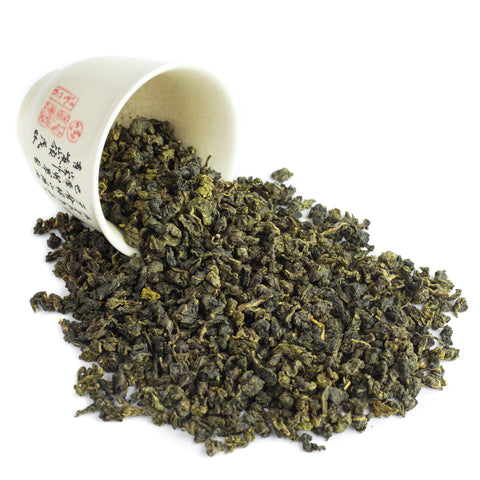
The Global Appeal of Types of Tea
The global appeal of types of tea is undeniable. Tea is consumed by billions daily. It transcends cultural boundaries. It is a staple in many societies. From ceremonial Japanese matcha to British afternoon tea, its presence is widespread. Tea houses offer a tranquil escape. They provide a space for connection. Tea ceremonies are rich in tradition. They foster mindfulness. The industry supports millions of livelihoods. It spans vast agricultural regions. Tea trade routes have shaped history. They connected distant lands. Tea continues to evolve. New blends and preparations emerge. Its versatility contributes to its popularity. It can be enjoyed hot or cold. It suits various occasions. Tea is more than a drink. It is a cultural phenomenon. It brings people together. It offers comfort and refreshment. Its universal charm endures.
Pairing Food with Types of Tea
Pairing food with different types of tea enhances the experience. Green tea pairs well with seafood. Its fresh notes complement delicate flavors. Black tea goes with hearty meals. It also suits rich desserts. Oolong tea matches roasted dishes. Its complex profile balances flavors. White tea is best with light snacks. Its subtle taste is easily overwhelmed. Pu-erh tea complements oily foods. Its earthy notes cut through richness. Herbal teas offer diverse pairings. Peppermint with chocolate is classic. Chamomile with pastries is soothing. Consider the tea’s strength. Match it with the food’s intensity. Experimentation is key. Personal preferences vary widely. A good pairing elevates both food and drink. It creates a harmonious sensory delight. This thoughtful combination transforms a simple meal. It becomes a memorable culinary journey.
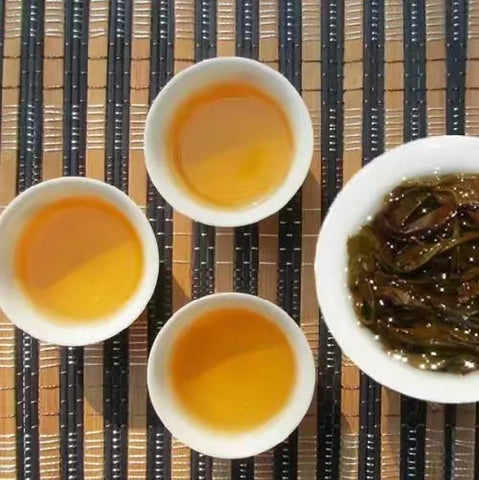
Popular Green Tea Varieties
Green tea offers a wide array of popular varieties. Each type boasts unique characteristics. These distinctions arise from cultivation and processing methods. Exploring these varieties deepens appreciation for green tea. They showcase the diversity within this single category.
- Sencha: This is the most common Japanese green tea. It has a fresh, grassy flavor. Steaming stops oxidation. This preserves its vibrant green color. Sencha is enjoyed daily.
- Matcha: A finely ground powdered green tea. It is used in Japanese tea ceremonies. Matcha has a rich, umami flavor. It provides a sustained energy boost. It is whisked into a frothy drink.
- Dragon Well (Longjing): A famous Chinese green tea. It has a distinctive flat shape. Its flavor is nutty and sweet. Pan-firing gives it a unique aroma. Dragon Well is highly prized.
- Gyokuro: A premium Japanese green tea. It is shade-grown before harvest. This increases chlorophyll content. It results in a deep green color. Gyokuro has a rich, savory taste.
These Popular Green Tea Varieties represent just a fraction of the green tea world. Each offers a distinct sensory journey. Their unique processing methods contribute to their individual profiles. From the everyday refreshment of Sencha to the ceremonial depth of Matcha, green teas cater to diverse palates. These varieties highlight the artistry involved in tea cultivation and preparation. They also demonstrate the cultural significance of green tea in both China and Japan. Exploring these options can truly broaden one's understanding of tea. It provides a deeper connection to this ancient beverage. This diversity makes green tea a fascinating subject for enthusiasts worldwide.
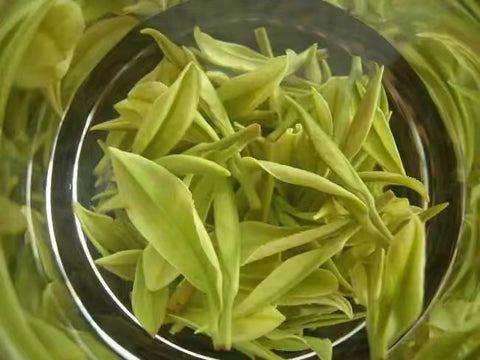
Oxidation Levels Across Tea Types
| Tea Type | Oxidation Level | Flavor Profile |
|---|---|---|
| White Tea | Minimal (0-5%) | Delicate, floral, sweet |
| Green Tea | None (0%) | Grassy, vegetal, fresh |
| Oolong Tea | Partial (10-80%) | Floral, fruity, roasted |
| Black Tea | Full (80-100%) | Malty, robust, fruity |
| Pu-erh Tea | Fermented (Post-oxidation) | Earthy, woody, smooth |
This table on Oxidation Levels Across Tea Types illustrates a fundamental aspect of tea production. Oxidation is a chemical process. It occurs when tea leaves are exposed to air. This process significantly influences the tea’s color, aroma, and flavor. White tea undergoes minimal oxidation. This preserves its delicate characteristics. Green tea is not oxidized at all. This maintains its fresh, vibrant notes. Oolong tea is partially oxidized. This creates a wide range of complex flavors. Black tea is fully oxidized. This gives it its characteristic dark color and robust taste. Pu-erh tea undergoes a unique fermentation process. This happens after initial oxidation. Understanding oxidation helps tea enthusiasts appreciate the diversity. It also explains the distinct qualities of each tea type. This knowledge is key to selecting and enjoying tea. It highlights the intricate science behind tea making. It also shows the artistry of tea producers worldwide.
Frequently Asked Questions
Q1: What are the primary differences between green tea and black tea?
Green tea and black tea represent two distinct types of tea. They originate from the same plant, Camellia sinensis. Their primary difference lies in processing. Green tea undergoes minimal oxidation. Leaves are quickly heated after harvest. This prevents enzymatic browning. It preserves their fresh, vibrant green color. Green tea often has a grassy or vegetal flavor. It retains more natural antioxidants. Black tea, conversely, undergoes full oxidation. Leaves are withered, rolled, and then exposed to air. This allows enzymes to react. The leaves turn dark brown or black. This process develops robust, malty flavors. Black tea typically has a higher caffeine content. It also has a longer shelf life. Green tea is often lighter in body. Black tea is generally stronger. Both offer unique health benefits. Green tea is known for catechins. Black tea contains theaflavins and thearubigins. These contribute to its color and taste. The choice between them depends on preference. It also depends on desired flavor and caffeine levels. Each provides a distinct tea experience.
Q2: Can herbal teas be considered true types of tea?
Herbal teas, often called tisanes, are not true types of tea. This distinction is important for tea enthusiasts. True teas come exclusively from the Camellia sinensis plant. This includes green, black, oolong, white, and pu-erh teas. Herbal teas, however, are infusions. They are made from various plant materials. These include herbs, spices, fruits, and flowers. Examples are chamomile, peppermint, ginger, and hibiscus. They offer a wide range of flavors. They also provide diverse health benefits. Many herbal teas are naturally caffeine-free. This makes them suitable for evening consumption. They are popular for their soothing properties. They are also enjoyed for their aromatic qualities. While not botanically tea, they are widely consumed. They are a significant part of the global beverage landscape. Their popularity stems from their versatility. They offer a natural alternative to caffeinated drinks. They provide a comforting and flavorful experience. This makes them a beloved category of beverages worldwide.
Q3: How does the processing of oolong tea differ from other teas?
Oolong tea holds a unique position among types of tea. Its processing is distinct. It falls between green and black tea in terms of oxidation. Green tea is unoxidized. Black tea is fully oxidized. Oolong tea undergoes partial oxidation. This level can vary significantly. It ranges from 10% to 80%. This partial oxidation is carefully controlled. It is a complex, multi-step process. Leaves are withered, then gently bruised. This breaks cell walls. It initiates oxidation. The leaves are then repeatedly rolled and dried. This process is often interrupted. It allows for precise control over oxidation. This creates a wide spectrum of flavors. Some oolongs are light and floral. Others are dark and roasted. The skill of the tea master is crucial. They monitor the leaves closely. They determine when oxidation is complete. This intricate balance gives oolong its complexity. It allows for multiple infusions. Each infusion reveals new layers of taste. This makes oolong tea highly prized. It is a fascinating example of tea artistry. Its unique processing creates its distinct character.

